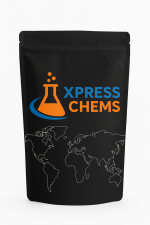Buy Cola Molly – USA & Europe
1. What is Cola Molly?
Cola Molly is a branded variant of MDMA (3,4-Methylenedioxymethamphetamine), known for its high purity and characteristic stimulant and empathogenic effects. It is commonly used in neuroscience and psychiatric research to study MDMA’s impact on neurotransmitters such as serotonin, dopamine, and norepinephrine.
2. Chemical Composition & Structure
The active ingredient in Cola Molly is MDMA, with molecular formula C11H15NO2. The molecule consists of a methylenedioxyphenyl ring attached to an amphetamine backbone. Cola Molly may be supplied as pharmaceutical-grade crystalline powder or capsules, designed for consistent dosing and high purity.
3. Research Applications
Cola Molly is used in experimental research investigating mood modulation, empathy enhancement, neurotransmitter release, receptor binding, and potential therapeutic applications like PTSD and anxiety disorder treatments.
4. Recommended Laboratory Handling & Safety Guidelines
Appropriate personal protective equipment (gloves, lab coat, eye protection) should be worn. Experiments should be conducted in well-ventilated labs or fume hoods. Precise dosing and contamination control are essential for reliable and safe results.
5. Hazard Warnings & Risk Statements (GHS Classification)
MDMA poses risks including neurotoxicity, serotonin syndrome, and cardiovascular strain, especially at high doses. Compliance with GHS hazard classifications and safety data sheets is mandatory.
6. Compatibility with Other Reagents or Substances
Avoid combining Cola Molly with MAO inhibitors or other serotonergic agents to prevent adverse reactions. It is generally compatible with standard laboratory solvents such as ethanol when handled properly.
7. Emergency Protocols for Accidental Exposure
In case of skin or eye contact, flush immediately with water. If inhaled, move to fresh air. Seek emergency medical attention in cases of ingestion or severe exposure.
8. Storage Stability & Shelf Life Monitoring
Store Cola Molly in airtight, light-protected, cool, and dry containers. The typical shelf life is 1 to 2 years when stored under appropriate conditions.
9. Can Researchers Purchase Cola Molly Without a License?
Yes, purchase is possible for research purposes without a license, subject to compliance with local laws and regulations.
10. Legal Status for Online Purchase
Legal status varies by country; buyers must verify compliance with the laws of their jurisdiction.
11. Safety for Laboratory Use
Cola Molly is safe for laboratory research when handled according to established safety protocols, including PPE and controlled dosing.
12. Special Considerations for Medical Conditions
Researchers with cardiovascular, neurological, or psychiatric conditions should consult healthcare professionals before handling.
13. Allergen Exposure Risks
Protective clothing is recommended to avoid allergic or irritant responses.
14. Use in Combination with Other Materials
Exercise caution when combining with other psychoactive or serotonergic substances.
15. Pregnancy and Breastfeeding
Avoid use or handling during pregnancy or breastfeeding.
16. Handling for Consistency
Maintain sterile conditions, use calibrated dosing instruments, and prepare fresh solutions.
17. Optimizing Research Output
Utilize pharmaceutical-grade MDMA and standardized laboratory protocols to achieve reproducible results.
18. Reported Research Efficacy
Cola Molly delivers consistent serotonergic and dopaminergic effects supportive of neuropsychiatric research.
19. Known Adverse Effects
Potential adverse reactions include serotonin syndrome, hyperthermia, and cardiovascular stress, minimized by adherence to safety guidelines.
20. Severe Exposure Response
Seek immediate medical attention and follow laboratory decontamination protocols.
21. Alcohol-Based Solvent Compatibility
Compatible with ethanol and similar solvents under proper laboratory conditions.
22. Managing Missed Measurements
Document any deviations and adjust protocols as necessary.
23. Recommended Storage Duration
Best used within 1 to 2 years when stored appropriately.
24. Stability After Testing
Store remaining supplies properly or dispose safely following hazardous waste guidelines.
25. Dependency and Sensitization Risks
Low risk under regulated research use; sensitization may develop with repeated exposure.
26. Long-Term Storage Recommendations
Store sealed, moisture-free, protected from heat and light.
27. Alternative Research Chemicals
Alternatives include MDA, MDEA, and other substituted amphetamines with similar effects.














Reviews
There are no reviews yet.